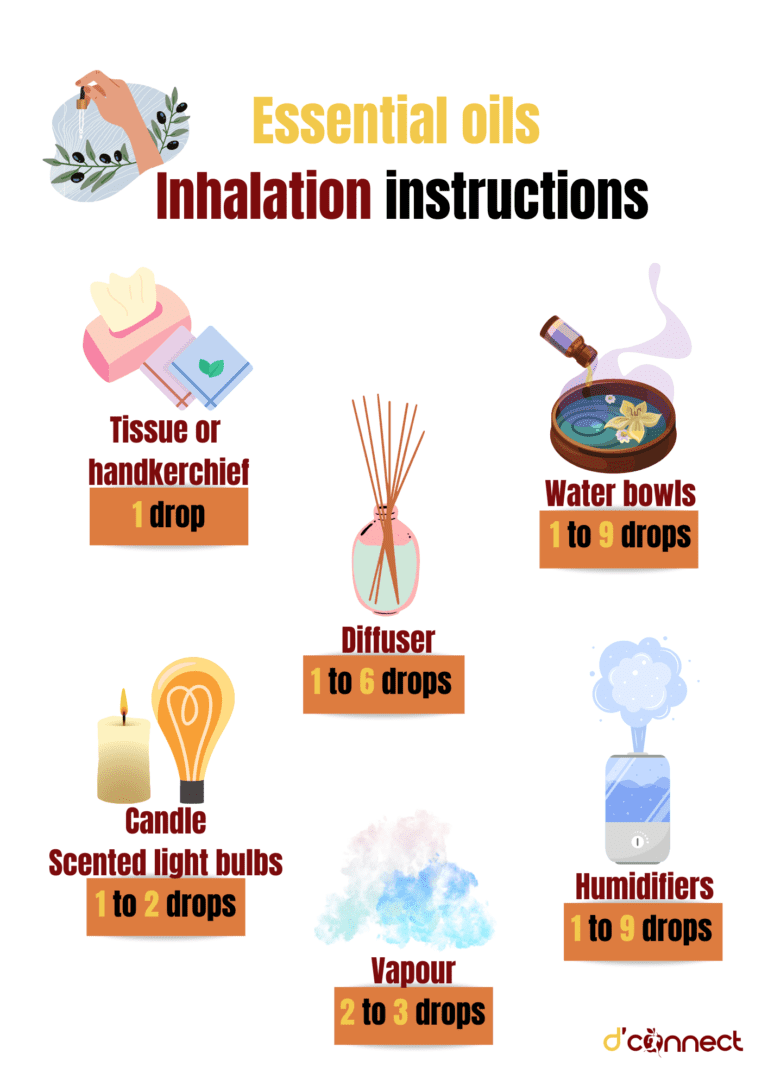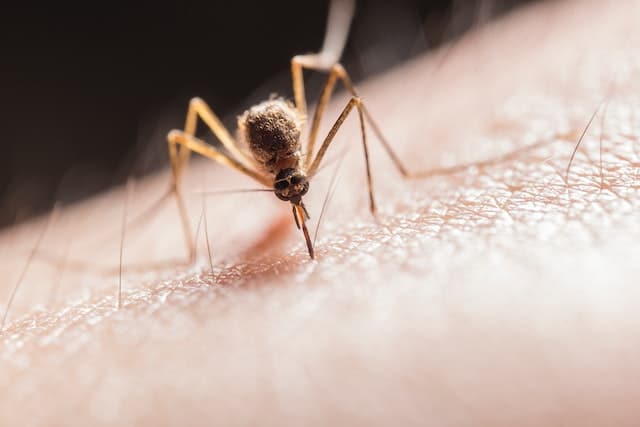
Miki Tameishi
ITEC Therapist (Aromatherapy, Holistic Massage, Reflexology), IEB Reflexologist, LCICI Japan Champissage trainer, Chakra-Aroma Reiki Master, Hbps Hydrotherapist
Eucalyptus is a must-have essential oil because it has a wide array of uses. It is well known to help with respiratory issues, but it also has antioxidant, anti-inflammatory, and pain-relieving effects.
However, it doesn’t end there. Eucalyptus oil is also commonly used in
- insect repellents
- healing ointments
- cleaning products
- perfumes
- vapour rubs
To understand more about this incredibly versatile essential oil, we will look at its properties and how to maximise its use for our benefit.
Introduction
Eucalyptus is one of the essential oils you simply must have in your household, especially in wintertime.
There are about 600 types of eucalyptus in Australia and the trees can often be seen in mountainous areas. Their leaves contain essential oils which cleanse the air and, when reflected by sunlight, make the mountains appear blue. Hence the name ‘The Blue Mountains’ near Sydney in New South Wales.

Common name: Eucalyptus, Tasmanian blue gum, blue gum.
Botanical name: Eucalyptus globulus.
Family name: Myrtaceae. This family is generally stimulating and good for the respiratory system.
Extraction methods: Steam distillation.
Parts used: Fresh or partially dried leaves and twigs.
Countries: Native to Australia. Cultivated mainly in Spain, Portugal, Brazil, California, Russia and China.
Colour: Colourless.
Odour/smell: Eucalyptus’ top notes are cineole-rich, with a refreshing, slightly camphoraceous menthol aroma.
Properties: Analgesic, antineuralgic, antibacterial, antispasmodic, antiseptic, anti-inflammatory, antirheumatic antiviral, astringent, balsamic, cicatrisant (oil used in topical preparations for the skin), deodorant, diuretic, expectorant, febrifuge (reducing fever), hypoglycemic, rubefacient (increases blood circulation) and a vermifuge (eliminates germs in the intestine).[1,2]
Chemical composition: the major constituents in eucalyptus are oxide 1,8 cineole and monoterpene.
1,8 cineole is an antiseptic that is also an expectorant. It has strong antibacterial effects against several strains of streptococcus and can assist in inflammatory airway disease.
Monoterpene contains the α-pinene antibiotic, which is an excellent bronchodilator (it makes breathing easy in cases of asthma), while the limonene antioxidant is anti-inflammatory.

Due to these special characteristics, eucalyptus makes a perfect ingredient in the development of many products, such as cough drops.[2]
Traditional uses
Australia
First Nation people use eucalyptus in treatments for
- cuts
- colds
- infections
They also burn eucalyptus leaves to help repel insects.[2]
During World War I, there was a huge demand for eucalyptus as it was used to help control both a meningitis outbreak and an influenza strain in 1919.[1]
Also, in Australia, eucalyptus is a traditional household remedy for respiratory ailments such as bronchitis and croup, and the dried leaves are smoked like tobacco for asthma.[3]
England
During the 19th century, eucalyptus oil was used in most hospitals to clean urinary catheters.
Testing was done in order to study which eucalyptus oil constituents kill
- bacteria
- some viruses
- fungi[2]
France
Jean Valnet was a medical doctor and a practitioner of aromatherapy, who reported that a spray containing only 2% essential oil of eucalyptus would kill 70% of staphylococci bacteria in the air.

Source: Kulkarni, P. A. Antimicrobial Activity of Commercially Available Essential Oils Against Streptococcus mutans. The Journal of Contemporary Dental Practice. (2012)
Next sniffle season, I suggest trying a steam or vapour rub inhalation of eucalyptus to clear nasal and mucus congestion and also to inhibit the proliferation and spread of the flu virus.[4]
Therapeutic uses
I normally use eucalyptus oils for deodorising and cleaning the treatment room. It is also useful for clients who find it hard to breathe while wearing a facemask during treatment.
Eucalyptus – analgesic, antiseptic and antifungal
Eucalyptus oils have been used to relieve insect bites and muscular pain.
It is also recommended to help with rheumatic pain and may be used to relieve muscle aches and pains and neuralgia.[1]
Eucalyptus may help the following conditions
- Arthritis
- Athlete’s foot
- Chickenpox
- Gout
- Herpes
- Measles
- Mosquito bites

Source: Hossain, M. Eucalyptus essential oil and effectiveness against pathogens. American Journal of Microbiological Research. (2018)
Our nervous system and eucalyptus
Eucalyptus can have a stimulant or sedative effect.
To understand how eucalyptus essential oil affects the central nervous system, a 2008 study verified the possible sedative effects of these oils in mice.[5]
Eucalyptus is recommended to use in case of
- headaches
- migraine
- neuralgia debility
- blocked sinuses
- lack of concentration and focus
- anger, hysteria and shock (cools emotions)[1,6]
Eucalyptus can be used to treat stress and fatigue
Respiratory system and eucalyptus
Eucalyptus is best known for its use as a decongestant through inhalation for colds and catarrh.
Oxide 1,8-cineole has a strong expectorant, antiviral, decongestant, mucolytic and anti-inflammatory effect.[7]
RELATED — Natural remedies: For our respiratory health (sinuses, throat and lungs)
Along with menthol and camphor, eucalyptus oil and cineol have the effect of reducing surface tension between water and air in the lungs.
This presumably enhances the effects of the lungs’ own surfactant, meaning eucalyptus may act as an expectorant (helps bring up mucus and clear the lungs as well as lubricating the respiratory tract).[1]

Source: Cermelli, C. Effect of Eucalyptus Essential Oil on Respiratory Bacteria and Viruses. Current Microbiology. (2008)
Eucalyptus can help with respiratory issues such as
- Asthma
- Catarrh
- Diphtheria
- Laryngitis
- Pneumonia
- Scarlet fever
- Tonsillitis
Eucalyptus and our skin care
Eucalyptus is an effective antiseptic, anti-inflammatory skin regenerator and insect repellent.
It can be used to treat
- burns
- blisters
- cuts
- wounds
- insect bites
How to use
Eucalyptus oil can be used for
- topical application (facial cleanser, toner, facial cream, and facial oil)
- massage
- compress
- bathing
- sauna
- room sprays
- ointment
- Amigel
- inhalation (direct inhalation, aroma diffuser, oil vaporiser)
Other uses
Eucalyptus oil and cineol are largely employed in the preparation of liniments, inhalants, cough syrups, ointments, toothpaste and as a pharmaceutical flavouring.
They are also used in veterinary practice dentistry and as a fragrance in soap, detergent, and toiletries. They are sometimes used for perfume and food flavour.[3]
Essential oils inhalation instructions
- Tissue or handkerchief – 1 drop
- Water bowls – 1 to 9 drops
- Candle / scented light bulbs – 1 to 2 drops
- Vapour – 2 to 3 drops
- Diffuser – 1 to 6 drops
- Humidifiers – 1 to 9 drops

Essential oils bath instructions
- Bath – 1 to 8 drops
- Shower – 1 to 8 drops
- Hand bath – 2 to 4 drops
- Foot bath – 1 to 6 drops
- Sauna – 2 drops per 600ml water[5]
Essential oils massage instructions
Ron Guba generally recommends a dilution from 2.5% to 10% essential oil in different carrier oils.
As an example, to create a 2.5% dilution, you can add 8 drops of eucalyptus essential oil to 10ml of carrier oils.[8]
Robert Tissland’s table recommends topical percentages and dilution guideline.[9] See below.
| Purpose of the essential oil mixture | Dilution range |
| Facial cosmetics | 0.2-1.5% |
| Body massage | 1.5-3% |
| Bath & body products | 1-4% |
| Specific problems | 4-10% |
| Pain, wounds | 5-20% |
Essential oil dilution guidelines

Aromatherapy blends
Other essential oils that combine well with eucalyptus are
- floral essential oils (lavender)
- herbal essential oils (juniper, tea tree)
- resin essential oils (benzoin)
- citrus essential oils (bergamot, melissa, lemon, lemongrass)
RELATED — Lemongrass (Cymbopogon citratus)
Bronchitis blend (massage)
Apply to the affected area.
- Eucalyptus oil – 3 drops
- Niauli CT1 – 2 drops
- Rosewood – 1 drop
- Ravensara – 2 drops
- Carrier (vegetable) oil – 10ml
Athlete's foot blend (massage)
Apply to the chest and solar plexus.
- Eucalyptus oil – 2 drops
- Geranium Egypt – 2 drops
- Thyme – 2 drops
- Bay laurel – 2 drops
- Carrier (vegetable) oil – 10m
RELATED — Bay laurel (Laurus nobilis)
Catarrh from cold (diffuser)
- Eucalyptus oil – 3 drops
- Eucalyptus radiata – 2 drop
- Peppermint – 1 drops
Insect bites blend (massage)
Apply to the affected areas.
- Lavender spica – 3 drops
- Eucalyptus – 2 drops
- Lemongrass – 2 drops
- Citronella – 1 drop
- Carrier (vegetable) oil – 10ml

Deby Atterby cough syrup
Gargle with two tablespoons of the syrup to relieve a sore or itchy throat.[2]
Ingredients
- Pure water – 125ml
- Rosania hydrosol – 125ml
- Raw sugar or native honey – 250g
- Fresh Eucalyptus leaf – ½ cup
- Glycerine or alcohol – 10ml
Method
Combine sugar/honey with hydrosol and water, bring to the boil, then simmer for 2 minutes. Break up fresh leaves and add to the mix.
Remove from the heat and cover with a paper towel and let it be for 15 minutes, then strain to remove the leaves. Refrigerate then add alcohol when cool.[2]
Precaution and Safety
Eucalyptus oil gas is reported to be non-toxic, non-irritant, non-sensitising.[1]
When taken internally, however, eucalyptus oil is toxic and as little as 3.5 ml has been reported as fatal.[3]
Eucalyptus oil may be fatal if swallowed
In a study of 200 consecutive dermatitis patients, only three (1.5%) were sensitive to 2% Eucalyptus oil.[10]
Related Questions
1. Do you recommend a specific brand of eucalyptus oil?
I normally use Essential Therapeutics from Australia for professional use. However, any brand should be fine, providing the label has a botanical name, expiration date and a lot number.
2. Can I use eucalyptus to repel pests around my home?
Yes you can, by making a repellent spray – add ¼ teaspoon of eucalyptus oil to 1 cup of water.
3. Can eucalyptus oil be used for oral health?
Yes, eucalyptus oil can be used for oral health.
Add 2 ml eucalyptus oil, a pinch of rock salt and turmeric powder to a warm glass of water. Gargle with this solution for sore throats and tonsillitis. Remember DO NOT SWALLOW the solution.
What do you use eucalyptus oil for? Let us know in the comments, or to read more on essential oils check out our section on Natural Medicine.
Miki is a Japanese-born traditionally trained massage therapist and aromatherapy practitioner. She has Japanese expertise, techniques and Western training. Miki has studied in both Asian and Western modalities.
Miki can be found at Herbal Aroma Spa and Wellness shop and LCICI Japan School – NZ. For more information on Miki, please visit HanaAkari.
References
(1) Battaglia, S. (2003). The complete guide to aromatherapy (2nd ed.). The international centre of aromatherapy.
(2) Atterby, D. (2021). Australian Essential oil profiles practical and clinical guidelines.
(3) Lawless, J. (1995). Complete essential oils. Element.
(4) Noreen, A. Kassem, MD. (2015). The flu-fighting essential oil. Alive. Retrieved from https://www.alive.com/health/eucalyptus/
(5) Gisele, F.D. (2008). Sedative Effect of Eucalyptus urophylla and E. brassiana in mice. Natural Product Communications. Retrieved from https://journals.sagepub.com/doi/pdf/10.1177/1934578X0800300928
(6) Candy, R. (2005). Aromatherapy Essential oil in colour.
(7) Buckle, J. (2003). Clinical aromatherapy (2nd ed.). Elsevier.
(8) Guba, R. (2006). Aromatherapy and regenerative skin care. The Centre for Aromatic Medicine.
(9) Tisserand, R. (2015). Tisserand institute. https://tisserandinstitute.org/essential-oil-dilution-chart/
(10) Tisserand, R. (2015). Essential oil safety (2nd ed.).






